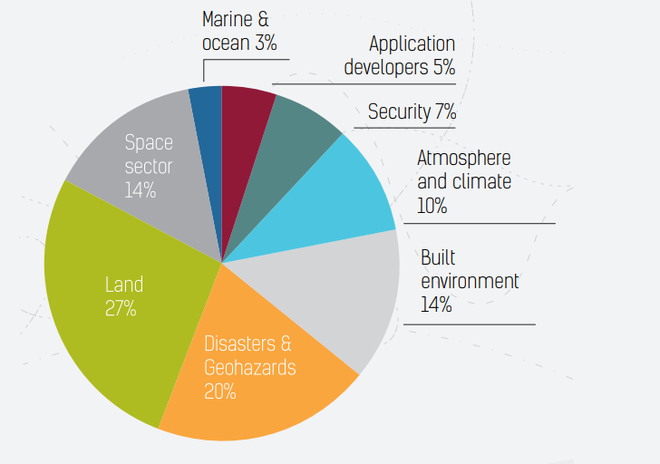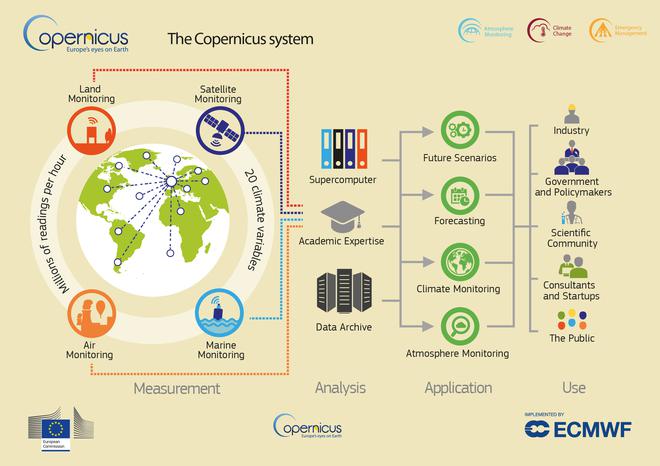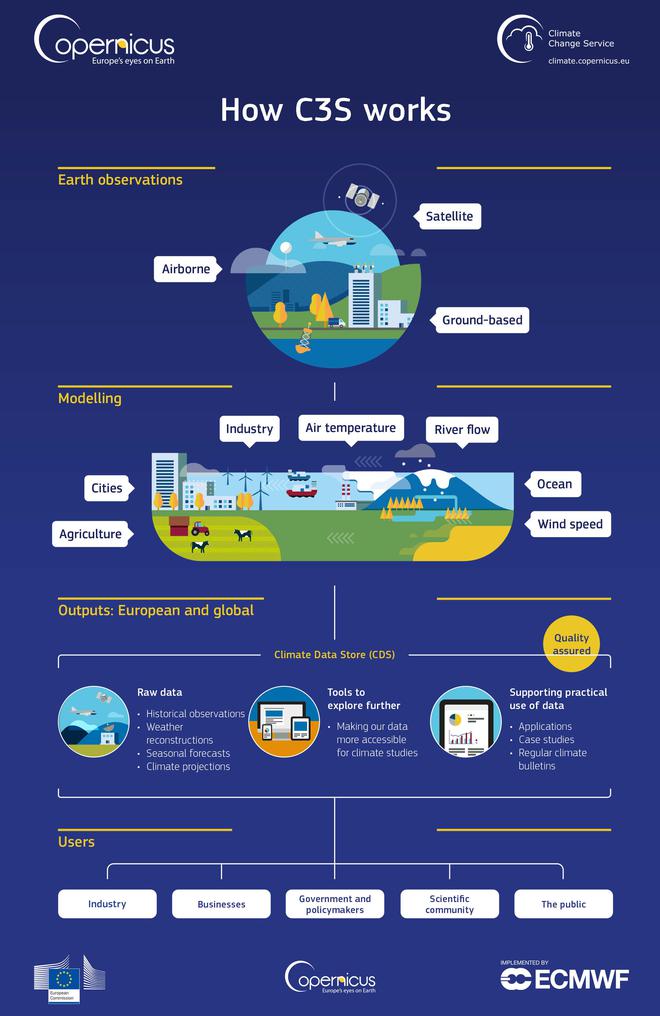
June 8, 2023, marks the 25th anniversary of Copernicus, the earth observation component of the European Union’s space programme. Launched in 1998 and previously known as the Global Monitoring for Environment and Security Programme (GMES), Copernicus is designed to provide information on the earth’s environment to aid sectors like agriculture, climate change, disaster management, urban planning, and more.
The programme is named after Nicolaus Copernicus, the 15th-century Polish scientist who first proposed a heliocentric universe model.
Copernicus integrates satellite and non-space data, including ground-based, airborne, and seaborne measurement systems, to offer data related to earth observation. The mission relies on a group of satellites, called Sentinel satellites, for gathering data.

Copernicus was implemented by member states in association with the European Space Agency (ESA), the European Organisation for the Exploitation of Meteorological Satellites (EUMETSAT), the European Centre for Medium-Range Weather Forecasts (ECMWF), EU Agencies and Mercator Océan. It is managed by the European Commission.
Its data is freely available for anyone to access.
Impact of the Copernicus programme
Agriculture
Precision farming, which uses technology sensors and analysis tools to improve crop yields, is one of the major impact areas of the Copernicus programme. Copernicus helps assess agricultural land use and trends, crop conditions and yield forecasts, and also supports input management, farm management recording and irrigation management.
Data from Copernicus was particularly helpful in improving irrigation management in Lower Austria, where the Marchfield region suffered from a water resource management problem due to a shortage of precipitation. Up to 60% of total freshwater use in this area is for irrigation.
To alleviate the problem, the service delivered crop development maps every 7-10 days, weather data and forecasts daily, evapotranspiration maps, and specific irrigation requirements depending on crop types.
Among the 30 farmers interviewed, 50% said that further improvements could be achieved by optimising the total amount of water requirements and distributing individual irrigation events. This was based on data from Sentinel satellites shared under the Copernicus programme.
Climate change
The main aim of Copernicus Climate Change services (C3S) is to support adaptation and mitigation policies of the European Union. Its impact can be seen in environmentally responsible water management undertaken by a popular brewery in the Netherlands, and identification of climate sensitive areas in Costa Rica as part of an intenational partnership.

The Heineken brewery in the Netherlands uses local river water for brewing beer. However, the quality and supply of this water could be threatened by climate change due to an increase in the frequency of dry periods or floods. Wageningen Environmental Research, together with Climate Adaptation Services, used data from Copernicus to create a plan focusing on business as well as the environment. This data helps the community understand the impact at a pan-European level, benefitting other sectors too, like agriculture, nature organisations, industry and drinking water companies.
Copernicus Climate Change services is also working with the University of Costa Rica and the German Society for International Cooperation (GIZ) to provide data to better manage protected areas and establish biological corridors associated with climate sensitive areas.
Disaster management
Copernicus supports preparedness and disaster prevention by providing data to identify risks and prevent loss of lives and damage. During the response phase, its maps can help identify the extent of the disaster, and during the recovery phase, it can help in monitoring medium- and long-term impacts on the environment, human safety and the economy, and their evolution.
Forestry
Earth observation data from Copernicus is used to provide forest mapping as well as forest change mapping. It can be used to support the upkeep of national forest inventories and track parameters like tree species and biophysical variables. Data from Copernicus can also be used to monitor concerns like forest fires (for both real-time detection and tracking) or illegal mining.
Urban planning
Efficient urban area management is a crucial part of sustainable development policy. Waste management and exploitation of resources are some common planning challenges having an adverse impact on the lives of citizens. Copernicus helps face these challenges by providing information on land use and land cover classification, urban growth, urban green areas, urban heat islands, and more. It also monitors the stability of infrastructure, and assesses new construction sites and population density.
Building Radar, a German start-up that supplies verified construction sales leads worldwide, relies on data from Copernicus to provide information like construction site location, construction phase, building size and other data on construction projects.
Sector-wise share of benefits of the Copernicus programme
Experts say the Copernicus programme has addressed crucial societal challenges like climate change, natural disasters, and border control. It is expected to generate €67 to €131 billion in benefits to European society between 2017 and 2035. Interestingly, the space sector only has a 14% share in the benefits generated by the service, while land, at 27%, has the biggest share.







